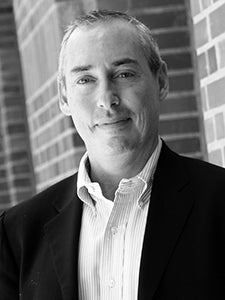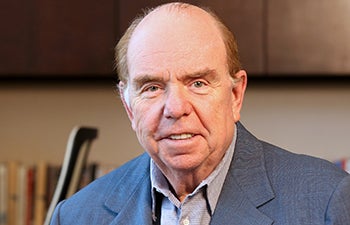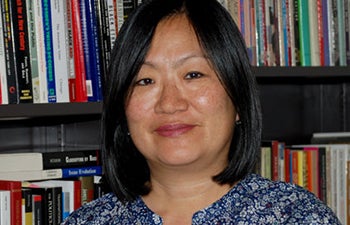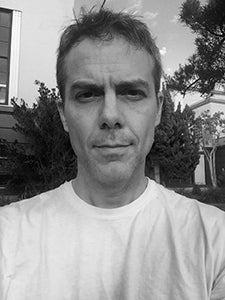
Is the Internet fueling social change or giving license to engage in lazy activism?
In 2011, political uprisings were rampant throughout the world — from the Arab Spring that started in Tunisia and swept through more than 15 other Arab countries — to Occupy Wall Street protesters huddled in New York’s Zuccotti Park.
During that time, activists that were separated by oceans, religions and reasons for rioting stayed connected through social media networks. Oded Marom, a Ph.D. student in sociology, examines the links between social movements and digital technology.
“Activists used the Internet as a way to communicate and create a public sphere that helped them feel as if they were all part of a global, rather than local or national, movement, protesting together against an unfair political and economic order,” Marom said. “What I found most striking was that although activists did not necessarily share a common ideological agenda, they were united around an intense common emotional experience that enabled them to circumvent their national differences.”

Online activism — which can be as simple as changing one’s Facebook profile photo to a rainbow flag or signing a petition to support gun control measures — has earned a reputation for being “slacktivist,” or offering a lazy way for people to feel as if they are taking part in a greater movement while never doing more than clicking a “thumbs-up” icon.
Marom, along with other political theorists at USC Dornsife, believes that while the Internet does have the potential to lower the bar for what constitutes “activism,” we should not discredit its power to incite meaningful change.
“In a way, what some call slacktivism can create a community of strangers who share a common commitment to a cause, mainly by lowering the cost in money, time and effort, of interaction and organization,” Marom said.
What can the Internet do for society?
Dan Schnur, director of the Jesse M. Unruh Institute of Politics, believes online political activism is a launch pad for efforts to influence policy.
“We can use online and social networking tools to inform and organize people around an issue, and that’s a terrific thing,” said Schnur, assistant professor of the practice of political science, “but it is only a first step. If all you do is text back and forth about how angry you are, not much is going to happen.”

Robert Shrum, Carmen H. and Louis Warschaw Chair in Practical Politics and professor of the practice of political science, agreed that the Internet’s greatest power is as an organizing tool.
“I do think social media can empower people to express themselves in a way that the old door-to-door petition-signing route didn’t quite do,” Shrum said. “But while it is true that the Internet can enable activism, there is no replacement for in-person events.”
Shrum pointed to a march for gay rights in Washington, D.C., that was organized entirely on facebook.
“I’m not sure slacktivism is a completely fair description for what’s going on with online political interactions,” he said. “For some people it’s probably purely symbolic, but for others, it is an expression of what they can do — and even a precursor for meaningful real-world gatherings or protests.”
What can the Internet do for my conscience?
In mid-November, when thousands of facebook profile photographs changed to create a sea of French flags to honor victims of terrorist attacks in Paris, a debate formed about whether this show of support had any force as a change agent — or if it was just a way to help helpless people feel better.

“I have a lot of sympathy for folks who change their facebook photos to show solidarity after Charlie Hebdo, or the attacks in Paris or San Bernardino, because it is something they can do,” Shrum said.
Because the average person in the United States can’t do anything directly about Paris, Shrum explained, “changing your facebook photo is at least sending a message — and we may reach the point at which there is so much indignation against guns and mass shootings that there will be some action.”
Jane Junn, professor of political science, has a more cynical view. She argues that true activism must be proactive and sustained. Knee-jerk reactions to a horrific event are generally slacktivist, she said, because participants often haven’t been engaged with the issues in the past, and the efforts generally die out.

“To put a French flag up when you haven’t been to France, and you don’t know anybody French, is pretty meaningless,” she said. “Most participation scholars will tell you that the larger and more anonymous an event, the less impact it has — unless there is a staggering number of people involved.”
The more in-depth and policy-specific an event is, the more influence it will have, Junn said.
“It is too great a leap to say showing solidarity for victims of the tragedy in Paris will affect gun control measures here,” she said. “A response from an elected official has to come from a pretty pointed and direct claim from his or her constituents.”
The psychology trap
John Monterosso, associate professor of psychology, raises a psychological paradox in the Internet’s ability both to fuel and squelch social movements.

“There is a body of social psychology research that shows getting people to do something small gets your foot in the door — even if the very action is meaningless,” Monterosso said.
Once someone feels like an activist — even if it is just a charade — the person may be more likely to do something else that requires greater effort because he or she doesn’t want to lose the identity of being an activist, Monterosso explained.
But that logic can also be turned on its head.
“Alternatively, once someone does something positive, they may feel it gives them the right to stop their efforts there,” Monterosso said.
In social psychology, this concept is called the moral licensing effect.
“In this case, it’s possible that by asking someone to do a meaningless task, they will later feel as if they already fulfilled their duty and are less likely to do the real work,” Monterosso said.
Upping your activist game
Bridging the gap between passive online support and more active participation goes back to a long-standing question in political sociology of what makes people shift from low-effort protests to more involved work, Marom said.
Marom cited research by Stanford University sociologist Doug McAdam, who studied participation in the 1964 Freedom Summer, when activists went to Mississippi to register black voters.
“McAdam’s explanation was that the more people who participate in low-risk activism, the more they get to know other activists and become integrated into the activists’ network,” Marom said. “This encourages the construction of their activist identity, which makes them more amenable to participating in more costly forms of activism.”
Schnur reinforced this idea referencing recent student protests on racial oppression in higher education, arguing that face-to-face, human demonstrations are still the most effective form of protest.
“It’s hard to imagine that if all those students at the University of Missouri had gathered in a chat room they would have made nearly as much of a difference as they have,” he said. “It’s not enough to tell people what to think. You have to be able to explain to them what to do — and that’s engaging in real-world activity.”